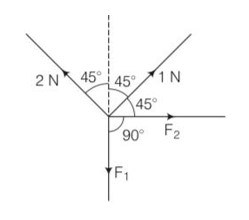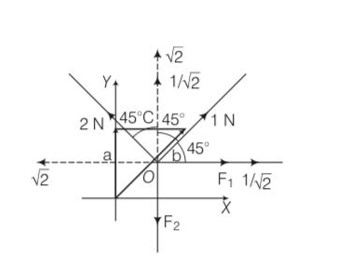Class 11th
Get insights from 8k questions on Class 11th, answered by students, alumni, and experts. You may also ask and answer any question you like about Class 11th
Follow Ask QuestionQuestions
Discussions
Active Users
Followers
New answer posted
4 months agoContributor-Level 10
This is a long answer type question as classified in NCERT Exemplar
i. The boiling points of liquid A is approximately 315 K and of liquid B is approximately 345 K (shown below graphically).

ii. Liquid C in a closed vessel will not boil as the pressure keeps on increasing.
New answer posted
4 months agoContributor-Level 10
This is a long answer type question as classified in NCERT Exemplar
i. CO2 will exist in a gaseous state between the points a and b at temperature T1.
ii. At point b, CO2 will start liquefying when temperature is T1
iii. At point g, CO2 will be completely liquefied when temperature is T2
iv. No, the condensation will not take place when the temperature is T3 because T3 > Tc.
v. Between b and c of the isotherm at T1 , represents the liquid and gaseous CO2 at equilibrium.
New answer posted
4 months agoContributor-Level 10
This is a assertion and reason answer type question as classified in NCERT Exemplar
New answer posted
4 months agoContributor-Level 10
This is a Long Answer type Questions as classified in NCERT Exemplar
Explanation -for the box to just starts sliding down mg
sin
New answer posted
4 months agoContributor-Level 10
This is a assertion and reason answer type question as classified in NCERT Exemplar
(i) Both A and R are true and R is the correct explanation of A.
New answer posted
4 months agoContributor-Level 10
This is a assertion and reason answer type question as classified in NCERT Exemplar
(i) Both A and R are true and R is the correct explanation of A.
New answer posted
4 months agoContributor-Level 10
This is a assertion and reason answer type question as classified in NCERT Exemplar
option (iii). A is true but R is false.
At high altitude, the atmospheric pressure is low.
New answer posted
4 months agoContributor-Level 10
This is a Long Answer type Questions as classified in NCERT Exemplar
Explanation- on resolving forces into rectangular components in equilibrium forces (F1+1/ )N are equal to and F2 is equal to ( )N
F1+1/ =
F1= =
F2=
New answer posted
4 months agoContributor-Level 10
This is a assertion and reason answer type question as classified in NCERT Exemplar
At constant temperature, the pV vs V plot for real gases is not a straight line because there is intermolecular attraction present in real gases which is absent in ideal gases; hence ideal gases form a straight line in the pV vs V plot at constant temperature.
New answer posted
4 months agoContributor-Level 10
This is a Long Answer type Questions as classified in NCERT Exemplar
Explanation – horizontal velocity ux= vs
During projectile motion horizontal velocity remains unchanged
Vx=ux=vs
In vertical direction vy2= uy2+2gH
Taking an Exam? Selecting a College?
Get authentic answers from experts, students and alumni that you won't find anywhere else
Sign Up on ShikshaOn Shiksha, get access to
- 65k Colleges
- 1.2k Exams
- 679k Reviews
- 1800k Answers






